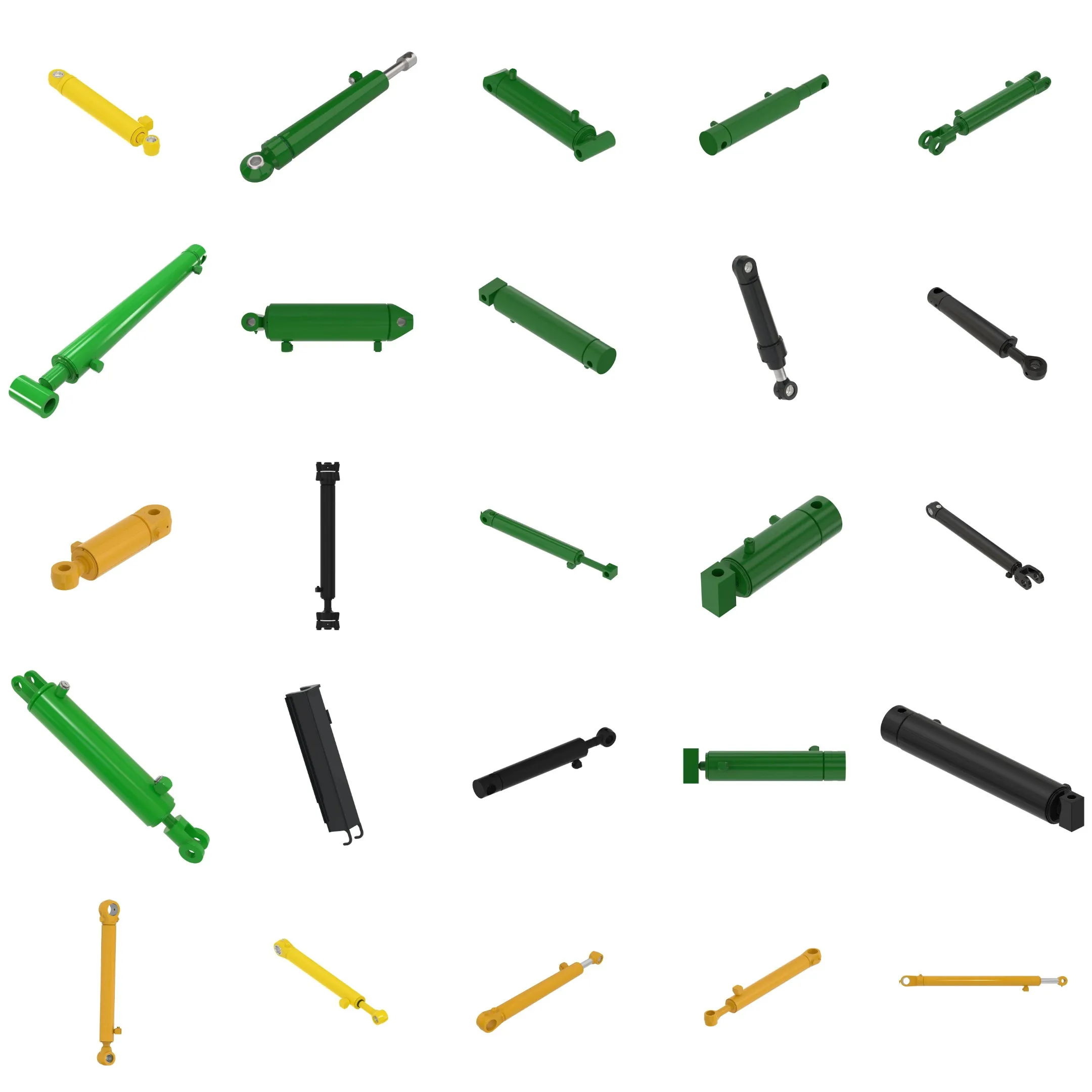Replacement Of AHC17656 Hydraulic Cylinder
Som en af producenterne, leverandørerne og eksportørerne af mekaniske produkter tilbyder vi hydrauliske cylindre og mange andre produkter.
Kontakt os for yderligere oplysninger.
Mail:sales@hydraulic-cylinders.net
Producent, leverandør og eksportør af hydrauliske cylindre.
Replacement Of AHC17656 Hydraulic Cylinder
First, let’s introduce the product and define what this hydraulic cylinder is and its purpose. The Replacement Of AHC17656 Hydraulic Cylinder is a crucial component used in various applications to facilitate the movement and operation of machinery. It is designed to provide hydraulic power and force to perform tasks such as lifting, pushing, and pulling.
Specifications
- Weight: 10.47 lb
- Height: 2.5 in
- Width: 3.2 in
- Length: 24.7 in
Compatible Models
- 625D
- 630D
- 630FD
- 635D
- 635FD
- 725D
- 730D
- 730FD
- 735D
- 735FD
- RD30F
- RD35F
- RDF 30
- RDF 35
Features
- Improved Equipment Performance: Replacing damaged or worn hydraulic cylinders can restore the normal operation capability of the equipment, ensuring its performance in various applications.
- Enhanced Safety: Regularly replacing hydraulic cylinders can reduce safety hazards caused by cylinder failures, ensuring the safety of operators and equipment.
- Overload Protection: New cylinder designs often incorporate better overload protection mechanisms, enhancing safety.
- Quick Installation: Modern hydraulic cylinders are designed for easy installation and replacement, minimizing downtime.
- Standardized Components: Many hydraulic cylinders are standardized products, making it easier to obtain replacement parts in the market.
Furthermore, our company is capable of producing this product and providing perfect replacements for these hydraulic cylinders.
Applications
- Excavators: Hydraulic cylinders in excavator arms or buckets may get damaged due to long-term use or overload, requiring replacement to restore normal operation.
- Cranes: Hydraulic cylinders in crane booms are prone to wear and tear during frequent lifting and lowering processes, necessitating regular replacement to ensure safety.
- Tractors: Hydraulic cylinders in front loaders of tractors may experience leaks or performance decline due to continuous lifting and tilting operations, requiring replacement.
- Harvesters: High-pressure hydraulic systems in harvesters put significant strain on cylinders, which may lead to fatigue and damage, necessitating timely replacement to maintain operational efficiency.
- Automated Production Lines: Hydraulic cylinders are used to control robotic arms and other automated equipment. Cylinder malfunctions can significantly impact production efficiency and should be replaced immediately.
- Die Casting Machines: In high-pressure and high-temperature environments, hydraulic cylinders in die casting machines may experience performance decline. Regular replacement ensures product quality.
- Mining Equipment: Hydraulic cylinders are used for lifting and moving heavy loads in mining equipment. Due to the harsh working environment, regular inspection and replacement are necessary to avoid equipment failures.
- Bulldozers: Wear of hydraulic cylinders in bulldozer blades can result in reduced pushing capability, necessitating timely replacement to maintain operational efficiency.
Maintenance Tasks
- Regular Inspection: Periodically check the hydraulic cylinder for any signs of damage, leaks, or abnormal wear.
- Proper Lubrication: Ensure adequate lubrication of the cylinder’s moving parts using the recommended hydraulic oil or grease.
- Seal Replacement and Calibration Check: Replace worn seals and check the calibration of the hydraulic cylinder to maintain optimal performance.
During installation, it is essential to provide proper alignment guidance for the cylinder and recommend using suitable installation brackets to secure the cylinder. We also offer inspection, repair, and replacement procedures, as well as component replacements and rebuilding services to extend the lifespan of the hydraulic cylinder.
Safety Considerations and Environmental Factors
When using hydraulic cylinders, it is crucial to follow safety measures to prevent accidents and ensure operator well-being. It is also essential to consider environmental factors when selecting and using hydraulic cylinders to minimize impact and ensure compliance with environmental regulations.
Troubleshooting and Common Issues
Here are some common troubleshooting tips and solutions related to hydraulic cylinders:
- Issue: Leakage from the cylinder.
Solution: Check the seals and replace them if necessary. Ensure proper sealing and tight connections. - Issue: Decreased cylinder performance.
Solution: Inspect the cylinder for wear or damage. If needed, consider replacing the cylinder or components causing performance decline. - Issue: Cylinder not extending or retracting.
Solution: Check the hydraulic system for any blockages, ensure proper fluid levels, and inspect the control valves. Clean or replace any faulty components as needed.
By following these troubleshooting tips and solutions, readers can effectively diagnose and resolve cylinder-related problems. Additionally, preventive measures should be implemented to minimize potential issues.

Design Considerations and Selection Criteria
When designing and selecting hydraulic cylinders, several factors should be considered:
- Load-Bearing Capacity: Ensure the cylinder can handle the intended load without failure or performance issues.
- Sealing Capability: Select appropriate seal materials to ensure effective sealing and prevent leaks.
- Durability: Consider the durability of materials used in the cylinder’s construction to withstand the intended application’s demands.
- Safety: Incorporate safety features into the cylinder design to prevent accidents and ensure operator protection.
- Maintainability: Design cylinders with easy access to components for maintenance and repair purposes.
Sealing and Lubrication
Hydraulic cylinders utilize various sealing elements, such as piston seals and rod seals, using wear-resistant materials like polyurethane and nitrile rubber. The cylinder body and threaded ends undergo fine surface treatment to enhance wear resistance. Regular lubrication with appropriate hydraulic oil is necessary to ensure smooth operation.
Regular Inspection and Preventive Maintenance
To maximize the lifespan of hydraulic cylinders, regular inspections and preventive maintenance tasks should be performed. Proper installation, lubrication, and adjustment are crucial. Providing accurate alignment guidance during installation and recommending suitable mounting brackets for securing the cylinder are recommended. We offer inspection services, repair and replacement procedures, and tips to enhance the lifecycle of hydraulic cylinders.

Take a Tour of Our VR Factory:
Take a tour of our VR factory with the following
Hydraulic Cylinder Application:


